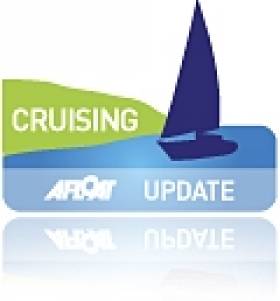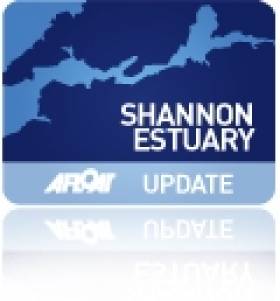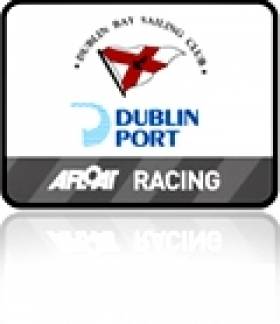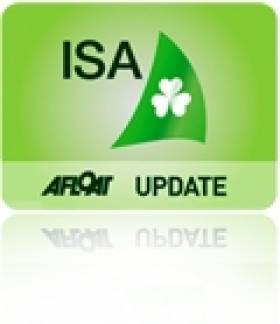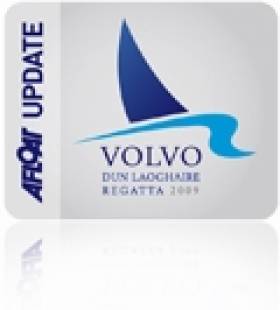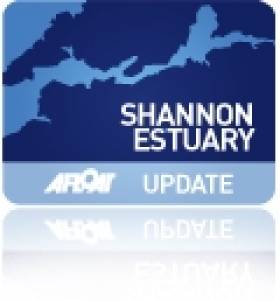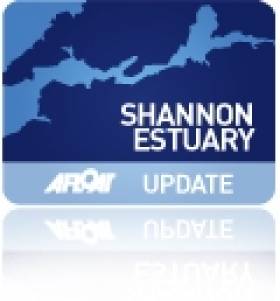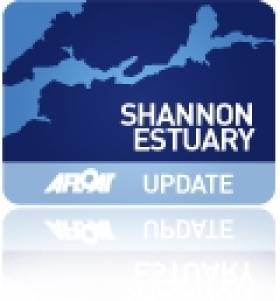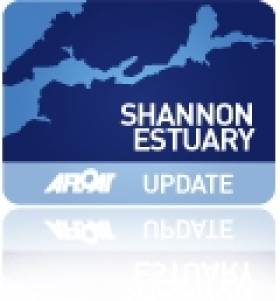Displaying items by tag: Mermaid
Dublin Bay Mermaid 'Voyage Home' Arrives in Crookhaven
#mermaid – When the ubiquitous DBSC Mermaid was established in the 1930's, few could have envisioned the class would continue to flourish 80 years later with new boats still being built and large competitive fleets regularly racing around the country.
The Mermaid is 3 person ¾ decked dinghy designed by "Skipper" John Kearney, a noted member of the National Yacht Club, during the first half of the 20th Century and well known internationally for many iconic designs. The brief given to Kearney by a group of Dun Laoghaire sailors was to design and build a rugged, but lively centre board dinghy suitable for Dublin Bay for no more than the cost of a motor cycle. It is a robust seaworthy boat with a good turn of speed and is very demanding to get best out of it when racing.
Over the years almost 200 boats have been built and with about 60 boats still active, it remains one of the largest racing fleets in the country. Whilst retaining its classic construction, the boat has carefully evolved over the years and become faster, easier to sail and most importantly, stronger and much easier to maintain.
The Mermaid Class is celebrating its 80th Anniversary in 2012 with up to 50 boats expected to attend the National Championships in Skerries in August.
As part of the celebrations, the Class decided to undertake an East about cruise in relays from Foynes on the Shannon, a leading Mermaid stronghold, to the spiritual home of the Mermaid in Skerries. The trip, known as "The Voyage Home", organised by Therese Mc Hugh a former MSA President, plans to visit most of the wonderful cruising locations on the South Coast culminating with hopefully what will be some fast sprints up the East Coast to arrive in Skerries on the weekend before the Championships. It is hoped that as many as 30 boats will participate in the last legs from Dun Laoghaire to Skerries via Rush. All the locations where Mermaids are regularly sailed will be visited during the trip including Dungarvan, the most recent area where Mermaids have established a foothold under the leadership of Eugene Burke.
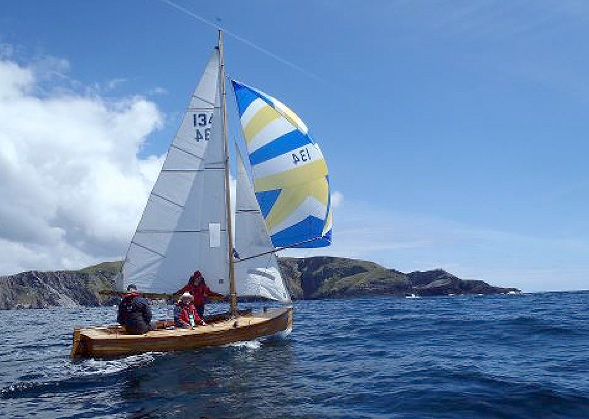
Thumbalina passes the Mizen on her journey home
Following spectacular sailing over the last two weeks the boat being used for the trip, Thumbalina No 26 (built in 1953 and currently owned by Patrick Boardman), has arrived in Crookhaven. Highlights so far include visits to Smerwick Harbour, Derrynane and fabulous passages through Dursey Sound and the Blasket Sound. Encounters with Dolphins and ideal benign sailing conditions have been features of the first 3 legs. By the completion of the "Voyage Home", it is hoped that virtually all the active sailors in the fleet will have participated in at least one leg.
The vibrancy of the Class is manifested with the imminent launching of 3 new boats built in Rush over the last 9 months. This project has been managed by Enda Weldon who is putting together his second boat since the mid 90's.
Over the next week Thumbalina will be sailed to Baltimore and then to Glandore with a planned arrival in Kinsale by 23rd June.
Former Champion Lifts Mermaid Trophy
#MERMAID – Last weekend the weather did not dampen the spirits of the participants who took part in Munster Mermaid Championship's at Foynes Yacht Club to coincide with the Foynes Irish Coffee writes Gerry Ryan.
Thirteen boats travelled from the east coast from club's as Skerries, Rush and the National Yacht Club, where they enjoyed some good racing on the Shannon Estuary.
On Saturday two races took place east of Foynes Island in wet conditions, where a force 3 north-easterly breeze pertained for both races. Officer of the Day, Alan McEneff ensured that the 20 boats participating raced the Olympic triangular course for the event.
Race one was very keenly contested with national winner, Sam Shiels sailing Azeezy from Skerries ensuring some good racing skills in beating Vincent McCormack in Three Chevrons. Race two it was much the same picture with Shiels taking line honours and Jill with Paul Smith and Pat Mangan.
On Sunday the rain eased somewhat to give a force 3 breeze with a slight wind shift during racing, and a strong tide to contend with. The winner of this race was Frankie Browne sailing Cara II, but Sam Shiels received the Munster Mermaid Cup on Sunday.
Overall, the home boats did well, with Vincent McCormack on Three Chevrons finishing third on race one, and Darragh McCormack came middle of the fleet in 9th position on Argo.
Vincent McCormack on Three Chevron's won the Best Foynes boat, while James McCormack won the Silver fleet trophy, which was specially commissioned for the golden jubilee year.
At the presentation of prizes on Sunday, Alan McEneff stressed that the next major event will be the West Coast Cruiser Championships in July, and asked that all the Mermaid sailors would assist in the championship's.
Mermaid Class Captain, Darragh McCormack said: 'It was the most spectacular, and skilful racing for the Munster championship's to date, which is getting new entries as it progresses every year.
This coming weekend the first leg of the Estuary Bell will take place hosted by the Royal Western Yacht Club in Kilrush. Two races are scheduled to take place on Saturday and one on Sunday. We wish the Foynes flotilla the very best in Kilrush this weekend. Notice of race etc., is on the club website.
Bannon Takes Record Sixth Mermaid Title
After four different race winners (5 including the void race which was resailed) there with three potential overall winners going into the last race. The championship had its usual controversies with one race being deemed void after a rule 66 rehearing of a protest for redress. There were 33 entries from the usual Mermaid strongholds.
The top 3 were:
1st Endeavour 102 Roger Bannon National Yacht Club
2nd Tiller Girl 77 Jonathan O Rourke National Yacht Club
3rd Innocence 188 Anthony Carty Rush Sailing Club
The 80 year old class is not steering shy of new technology. Class techie Peter Scallan organised multiple live blogs on a special web site which provided live updates and photos during every race. http://www.dublinbaymermaid.org and http://www.dublinbaymermaid.org/fenit2011
Moth Dinghy Makes its Dublin Bay Sailing Club Debut
Making its debut for the first time under the club burgee was an International Moth dinghy. The ultra fast hull was airborne at just eight knots of breeze, making even the trapezing Fireballs look slow. But despite the pace the new fangled dinghy did not feature in the overall Portsmouth Yardstick (PY) results. See below.
A healthy turnout of six 'balls, urged on by the fact that the class World Championships is in Sligo in 46 days time, got some trapezing gusts and some planing waves downwind in a north-easterly breeze of 6-8 knots. S. Oram took the winning gun from Louis Smyth sailing Licence to Thrill.
Single handed Lasers boasted twice the Fireball turnout to be the biggest class racing in Scotsman's bay tonight. It's a show of strength from a class surely worthy of its own start if this kind of turnout can be maintained.
Sean Craig won the Laser race from Peter Craig but the overall PY result went to E. Ryan's RS400.
Two Dublin Bay Mermaids and disappointingly, a single IDRA 14, No.124, Squalls also competed.
DUBLIN PORT Dublin Bay Sailing Club Results for 26 APRIL 2011
FIREBALL - 1. nn (S Oram), 2. Licence to Thrill (Louis Smyth), 3. Incubus (C Power/M Barry)
MERMAID - 1. Lively Lady (G O'Neill & M Hanney), 2. Jill (P.Smith/P.Mangan)
PY CLASS - 1. E Ryan (RS400), 2. Sean Craig (Laser), 3. Peter Craig (Laser)
BENETEAU 31.7 - 1. Extreme Reality (P.McSwiney/E.O'Rafferty), 2. Magic (D.O'Sullivan/D.Espey)
BENETEAU 31.7 - 1. Magic (D.O'Sullivan/D.Espey), 2. Extreme Reality (P.McSwiney/E.O'Rafferty)
CRUISERS 2 - 1. Cor Baby (Keith Kiernan et al), 2. Red Rhum (J Nicholson), 3. Free Spirit (John O'Reilly)
CRUISERS 3 - 1. Grasshopper 2 (K & J Glynn), 2. Pamafe (Michael Costello), 3. Papytoo (M.Walsh/F.Guilfoyle)
CRUISERS 4 - 1. Maranda (Myles Kelly), 2. Ghrazel (Charles Pearson), 3. Artemis (J.Giles)
RUFFIAN 23 - 1. Diane ll (Bruce Carswell), 2. Icicle (C & J Murray), 3. Alias (D.Meeke/M.McCarthy)
SIGMA 33 - 1. Rupert (R.Lovegrove/P.Varian), 2. Pippa lV (G.Kinsman/K.Blake/M.O'Brien)
SQUIB - 1. Tais (Michael O'Connell), 2. Periguin (N.Coakley/J.Redahan)
More DBSC News here.
Sailing Body Elects First Female President
In one of her last official functions as Minister for Sport, outgoing local TD Mary Hanafin attended the Irish Sailing Association's annual Ball last Saturday in the Royal Marine Hotel in Dun Laoghaire.
Attended by 315 people the black tie ball featured an awards ceremony that has been hailed 'a great success' by the association.
On Saturday afternoon the association elected a new President, Niamh McCutcheon, the first female ISA President since the organisation was founded in 1945.
A collection in aid of the RNLI raised over €2,250.
Award details below:
ISA Sailing Achievement of the Year
This award is presented by the ISA to recognise the outstanding achievement in a sailing craft by an Irish person or in Ireland during 2010.
Winner: Nicholas 'Nin' O'Leary, Royal Cork Yacht Club
Nicholas' achievements included narrowly beating his father Anthony at the ISA All Ireland Championships in 2010 by just a single point after a nail-biting finale in difficult conditions off Kinsale in November. The win made it three-in-a-row for this remarkable young 24 year old sailor - the only person to achieve this in the 64 years of the event's history.
ISA Volunteer of the Year
This award is given to a member of an ISA affiliated club or class who has made a significant voluntary contribution to their sport during 2010.
Winner: Brian Craig, Royal St. George Yacht Club.
Brian has been nominated by the Royal St. George Yacht Club for the vital role he has played in developing sailing in Ireland and specifically Dun Laoghaire over the past 40 years. His most recent success was winning the bid for Dun Laoghaire to host the 2012 ISAF Youth Worlds.
ISA Youth Sailor of the Year
This award is presented by the ISA to recognise the outstanding achievement by a sailor competing in ISA Performance Pathway boats during 2010.
Winner: Finn Lynch, Blessington Sailing Club
Placing 2nd overall at the Topper World Championships in 2010 left the Carlow sailor in good stead for a Youth Sailor nomination. A determined sailor and strong character, it's clear that with these strengths Finn has the potential to go far in our sport.
ISA Instructor of the Year
This award recognises the role instructors have in providing access to our sports. The final 5 have been nominated by their students with the ultimate winner selected by an ISA judging panel.
Winner: Aine Carroll, Rush Sailing Club
Aine has been an ISA instructor for the last 11 years, instructing both adult and junior sailors in Rush Sailing Club. A keen Mermaid sailor, her love of sailing, her enthusiasm for the sport and willingness to give her time to her sailors have been infectious and remarkable. Apparently the kids at the club think she is a 'legend' and 'cool'!
ISA Training Centre of the Year
The face of ISA water sports to thousands of participants. The best in 2010 as nominated by their students.
Winner: University of Limerick Activity Centre
Situated on the sheltered shores of Lough Derg, University of Limerick Activity Centre has been in operation for over a decade. ULAC provides a varied programme of adventure activities to the general public. The University of Limerick Activity Centre runs ISA courses in sailing dinghies, windsurfers, powerboat as well as emergency care training courses.
First entries in for Volvo Dun Laoghaire Regatta
July's Volvo Dun Laoghaire regatta has taken in 22 entries six months ahead of the first race. It's an encouraging figure that's on a par with the 2009 VDLR, the biggest regatta in Irish sailing that year.
The positive early response is an indication, says organiser Adam Winkelmann, that the 2011 fleet, should be a bumper one too when it sets sail on July 7th for the four day event.
The emphasis is again on providing quality racing over different courses each day but organisers are also aiming to live up up to the regatta's pre-event billing as a 'Mega Party'.
The event has opened a new website, a new Facebook page (with afloat.ie, so if you're a Facebook user please show your support and 'like it'). The regatta site is also featuring the youtube clip below of events on the bay two years ago.
So far entries received are spread across nine separate classes but it's a visiting Wayfarer fleet with eight boats named already that is setting the pace. The organisers are expecting up to 50 of the two man classic design for the class National Championships that's being staged as part of the regatta.
The notice of race (NOR) was published online in October and highlighted a reduced entry fee for 'earlybird entries'. Click HERE. or scroll down to download it as a PDF. If you participated in 2009 and entered online, this year you only need to enter your email address.
Three boats are entered in the non spinnaker class and another three in the Squib keelboat. Two entries have been received in both IRC 2 and 3.
It's still too early for a table of bands to be decided but the organisers intend to give some indication of handicap break-ups as the entries build. The IRC bands will be in line with those laid down by the Irish Cruiser Racing Association.
Despite the fact the regatta's strength since 2007 is that it draws on the capital's own fleet of 400 boats it is in fact visitors from elsewhere on the east coast that are first in. East Down Yacht Club, for example, has four entries.
But locals are signing up too. Single entries have been received in the Mermaid, Beneteau 31.7, Dragon and IRC Zero classes.
Course areas are likely to stay the same according to principal Race officer con Muphy of the National YC. Th race team is Alan Crosbie - KYC, Peter Crowley - RCYC,
David Lovegrove - HYC, Harry Gallagher - HYC, Henry Leonard - RIYC, Jack Roy - RIYC and Con Murphy - NYC. Mike Butterfield will head up the jury.
The organisers are on the look out for volunteers to assist in the run up to and during the country's biggest sailing event. In 2009 over 300 helped to make it the biggest participant sport event in the country after the city marathon, with over 3,500 sailors afloat. More details from Ciara in the event office HERE.
Dempsey Confirmed Winner with Race to Spare
The new champion has previously won Mermaid Week in 1987 and again in 2000, sailing his own boat No. 36 Elizabeth. Paul Winter's boat, No. 183 Wannago has won Mermaid Week once before, in Fenit in 2002, helmed by her builder and former owner Sam Shiels.
The winner of the Daphne (Silver fleet, 12 boats) was Geraldine O'Neill in 73 Lively Lady crewed by her husband Mick Hanney (President of Mermaid Sailing Association) and Ailbhe Smith. O'Neill, like Dempsey didn't have to sail on the last day to secure the trophy.

The Mermaid Start for Race 6 today in a 22 knot breeze on the Shannon Estuary
The Designer (Bronze fleet, 23 boats), unlike the others was down to the bitter end with Mark McCormack (54 Hycilla) and Paddy Archer (18 Clare) being the main contenders. But retirements of 54 and 18 due to gear failure in squalls allowed Mark Boylan of Skerries (177 This is It) sailing a boat built by his grandfather Joe to achieve overall victory.
Overall results:
1st 183 Wannago Owner Paul Winters, Helm Jim Dempsey, Crew Cian O'Regan and Scott Flanagan of Skerries - 8 points
2nd 123 Vee Owner & Helm, Jim Carthy, Crew Paula & Muriel Carthy of Rush - 13 points
3rd 131 Wild Wind Owner & Helm, Paddy Dillon, Crew Johnny Dillon & Rory Grimes of Rush- 13 points
4th 188 Innocence Owner & Helm, Anthony Carthy, Crew Marguerite Carthy and Eoin Butterly of Rush - 24 points
5th 187 Zuleika Owner & Helm, Derek Joyce, Crew Cillian Joyce and Darragh Hassey of Wexford - 29 points
6th 135 Cara II Owner & Helm, Frankie Browne, Crew Marina & Frankie Browne Jnr of Skerries - 30 points
Daphne - 73 Lively Lady Owner & Helm Geraldine O'Neill, Crew Mick Hanney, Ailbe Smith of National Yacht Club
Designer - 177 This is It Owner Joe Boylan, Helm Mark Boylan, Crew Niall Collins & Graham Daly of Skerries
Dempsey Declared Mermaid Champion with Race to Spare
Jonathan O'Rourke's No.77 Tiller Girl won today, leading the fleet the for the first half and then tussling with No 187 Zuleika for the 2nd half, eventually winning out on the last beat. There was considerable place swapping further down in the fleet. Of particular interest is the four McCormack boats competing for the Munster trophy. Brothers James and Vincent, and James' sons Darragh and Mark are competing in their four Mermaids and all in the running for the Munster trophy (9 boats eligible). They went around the 2nd leeward mark in a raft today, though without troubling the protest committee. It looks like it will be down to the last beat on the last day (tomorrow, Race 6).
The new unofficial champion has previously won Mermaid Week in 1987 and again in 2000, sailing his own boat No. 36 Elizabeth. Paul Winter's boat, No. 183 Wannago has won Mermaid Week once before, in Fenit in 2002, helmed by her builder and former owner Sam Shiels.
The unofficial winner of the Daphne (Silver fleet, 12 boats) was Geraldine O'Neill in 73 Lively Lady crewed by her husband Mick Hanney (President of Mermaid Sailing Association) and Ailbhe Smith. O'Neill, like Dempsey doesn't have to sail tomorrow to secure the trophy.
The Designer (Bronze fleet, 23 boats), unlike the others will be down to the bitter end with Mark McCormack (54 Hycilla) and Paddy Archer (18 Clare)being the main contenders.
All of the above is provisional information as Protest Time is still open for Race 5 until 20:41 this evening and overall championship results will not be confirmed officially until after 17:00 on Friday 6th August.
For the first time this year, the Mermaid Sailing Association and Foynes Yacht Club have been running a live blog during racing with updates every few minutes from the committee boat, supported by analysis from the race office. Live photos are also posted on the blog, including contentious start lines and boat on boat action. In today's racing over there were over 700 views of the blog and more than 100 on line at www.dublinbaymermaid.org/foynes2010 <http://www.dublinbaymermaid.org/foynes2010> simultaneously.
Mermaid Week concludes tomorrow with Race 6. 33 boats are competing. Follow the Live Commentary at for news of any protest this evening and during racing tomorrow from 13:00.
'Wannago' Leads in Foynes After Four Races
Conditions were lively, with 22 knots of breeze from the NNW at times. Spinnaker handling skills were tested and a number of crews went for a swim as the spinnakers took the boats over in
the gusts. One of those was Frankie Browne in his recently restored Cara II. He recovered well, bailed the boat and fought his way back up the fleet, picking off two boats on the finish line.
Race 5 tomorrow is at 16:00, after which the discard applies. 33 boats are competing and racing concludes on Friday.
You can follow all the action live on the Live Commentary blog, with real time photos from the Committee Boat and Race Office: http://www.dublinbaymermaid.org/foynes2010/index_files/Commentary.htm
Race 4: 1st Wannago, 2nd Vee, 3rd Wild Wind, 4th Innocence, 5th Zuleika, 6th Tiller Girl, 7th The Message, 8th Thumbalina, 9th Helen and 10th Fugitive. 3 boats DNS, 3 boats RTD.
Overall after Race 4: 1st Wannago, 2nd Wild Wind, 3rd Vee, 4th Innocence, 5th Dolphin, 6th Jill, 7th Lively Lady, 8th Cara II, 9th Fugitive, 10th Zuleika.
Daphne Fleet Overall after Race 4: 1st Lively Lady, 2nd Thumbalina, 3rd Swallow
Designer Fleet Overall after Race 4: 1st Hycilla, 2nd Clare, 3rd Syrena
Munster Fleet Overall after Race 4: 1st Hycilla, 2nd Argo, 3rd Three Chevrons
Racing Continues Apace at Mermaid Week
Race 3 of the National Mermaid Championship starts today at 15:00, followed by the annual 'crew' race. Five times champion Derek Joyce in 187 Zuleika has a major challenge to stay in the running and really needs a win to stay in contention. The stiffer breezes foretasted today should suit him. Another boat with some work to do is 131 Wild Wind, sailed by last year's champion Paddy Dillon; as he is lying third overall at seven points, he needs to stay in the top three today.
Yesterday's winner, Shay O'Toole (182 Dolphin) is lying 6th overall and another win today could put him in contention for the Championship. Current overall leader Jim Dempsey (183 Wannago), with two seconds under his belt, needs to maintain consistency as four times champion Jim Carthy (123 Vee) is hot on his heels just one point behind.
Of the 186 Mermaids built since 1932, some have been built by professionals and some by amateurs. Amateur is, perhaps not the best word as many Mermaid sailors are carpenters, furniture makers and woodwork teachers by profession and have build fast boats to exacting standards. The most prolific builders over the years have been John Brennan of Dun Laoghaire (16 boats), James Kearney (15 boats) and Skee Gray (10 boats).
Of the thirty three boats competing this week, Brennan built three, Harry & Tom Grieves built three and Des Tyrell built three. Four sailors are on board boats they built themselves: Frankie Browne (135 Cara II), Martin O'Toole (179 Bean Adhmaid), Shay O'Toole (182 Dolphin) and Ross Galbraith (185 The Message). Former champion Joe Boylan built the boats being sailed by his son Aidan (138 Zeila) and grandson Mark (177 This Is It).
If there was a Formula 1 style 'Constructor's Championship', the top three builders since 1953 would be: Harry & Tom Grieves, 9 wins; John Brennan, 8 wins and Des Tyrell, 7 wins. This year the Grieves boats are 73 Lively Lady, 76 Helen and 77 Tiller Girl. The Brennan boats are 131 Wild Wind, 143 Jill and 146 Fugitive, while the Tyrell boats are 186 MyDi, 187 Zuleika and 188 Innocence. It's all to play for.
Live updates will be blogged from the race area today at http://www.dublinbaymermaid.org/foynes2010/index_files/Commentary.htm.


























